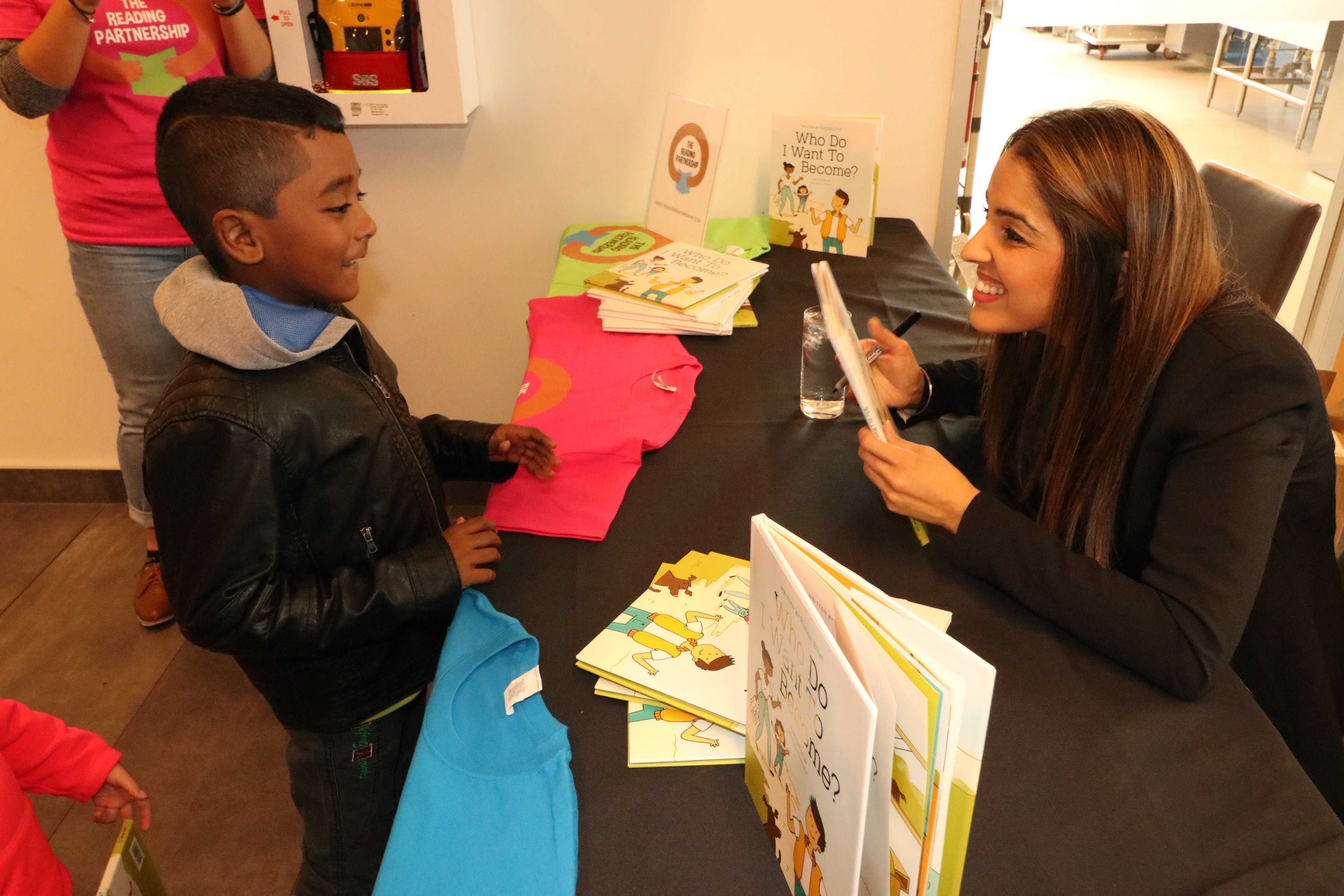on
BY: ALYSSA MAHADEO
As fall blends into winter, people naturally come together to appreciate each other during this season of giving.
Although here in Canada we celebrate an early Thanksgiving, there is always so much for us to be thankful for, and many of us feel naturally inclined to do something meaningful for someone, which most times comes in the form of doing our part to give back to the community.
On Sunday, October 21st, dozens of Scarborough families gathered at Centennial College’s School of Hospitality, Tourism and Culinary Arts to engage in a new type of event bringing the community together in a fun, healthy and educational way.
This event, dubbed Eating and Reading, was an initiative partnered by Centennial College and The Reading Partnership, a community organization that works to address low literacy rates among children in East Scarborough.
44% of sixth graders living in the Kingston-Galloway-Orton Park (KGO) community are not reading to provincial standards. The KGO community is one of Toronto’s most vibrant areas due to its population and diversity and it is full of people who care for each other. So much about this community is wonderful, and for organizations like The Reading Partnership seeing young people struggling is unacceptable. Literacy is a basic human right and the foundation for lifelong learning which too many of the youth do not experience or enjoy.
“Institutions might not always see themselves as responsible for tackling issues such as low literacy rates in communities,” said Camesha Cox, executive director of The Reading Partnership. “Or they may want to help but might not know exactly what they can do. We’re thinking outside the box, finding ways to make anybody who wants to be involved a partner.”
Camesha is an Ontario-certified teacher with a Master’s Degree from the University of Toronto and has been a resident of the KGO community for over 20 years. Through the establishment of The Reading Partnership, she has made it her mission to make their vision a reality to ensure that every child in every community will have the skills and confidence needed to make positive choices for their lives and their futures.
The Reading Partnership is a project of Tides Canada’s shared platform, which supports on-the-ground efforts to create uncommon solutions for the common good. Tides Canada is a national Canadian charity dedicated to a healthy environment, social equity, and economic prosperity. The Reading Partnership is committed to the principles of dignity, independence, integration, and equal opportunity.
The families arrived an hour past noon and were seated and served lunch. The meal was served “family-style” with platters of sandwiches, vegetables and dips brought out and placed at tables where families could help themselves.
The entire meal which included soup and dessert was free for the families and prepared in surrounding kitchens by Centennial Culinary Art students. The families were also granted one additional gift that day – a reading from children’s author Dr. Rumeet Billan, along with a free copy of her newly released book, Who Do I Want To Become?
Dr. Rumeet Billan is an award-winning, internationally recognized entrepreneur, learning architect, speaker, author, and humanitarian. Her mission is to raise potential by designing experiences that build resilience.
After reading from her book, Dr. Billan led a discussion about the most common question that children and young people are often asked: what do you want to be? Dr. Billan’s book encourages children, and adults, to instead ask themselves who do you want to be? A question, the author says, that can be answered by character traits and attributes.
“It’s about creating positive habits around eating and reading so that children can have positive reinforcements,” Dean Joe Baker of Centennial College said about the event.
Ava Morgan a mother who brought her family to the lunch and literacy event shared, “I thought it was amazing, the book was inspirational, the message was good, and then to combine it with food – we weren’t expecting such an elaborate, delicious presentation.”
The Reading Partnership’s community-based project continues to work, teaching parents how to help their children read. When children fail, we all do. If children do not master the basics of reading and writing while they are young, they lose out on important opportunities and it’s harder for them to reach their potential. This creates a cycle that can be hard to break. That is where The Reading Partnership comes in.
They also work with local partners to promote and improve literacy in the communities that need it the most.
“We give families the tools they need to help children learn to read. Our programs, such as the RPP, work best when caregivers are just as excited to learn as their child,” Cox explains. “When we all work together, the programs are rewarding and help make real, lasting change.”
The event catered specifically to families, and included a chartered bus from Toronto Community Housing, in an effort to keep the opportunity accessible. In total, there were about 35 families in attendance with more than 100 guests who came out to learn more about the importance of literacy in the community, and how parents can help to set their children up for long-term success.
It’s something Dean Baker hopes to see again. “We try to stay really connected to our local community,” Baker said. ”The Reading Partnership has big plans and goals. We hope to be a part of that.”
The Reading Partnership continues their work grounded in research that helps them to better understand the community’s needs. Together with their partners, their efforts are driven by the Literacy Now! Research Project to make sure the work they dedicate themselves to is as meaningful and as effective as possible.
Stay in the loop with exclusive news, stories, and insights—delivered straight to your inbox. No fluff, just real content that matters. Sign up today!












